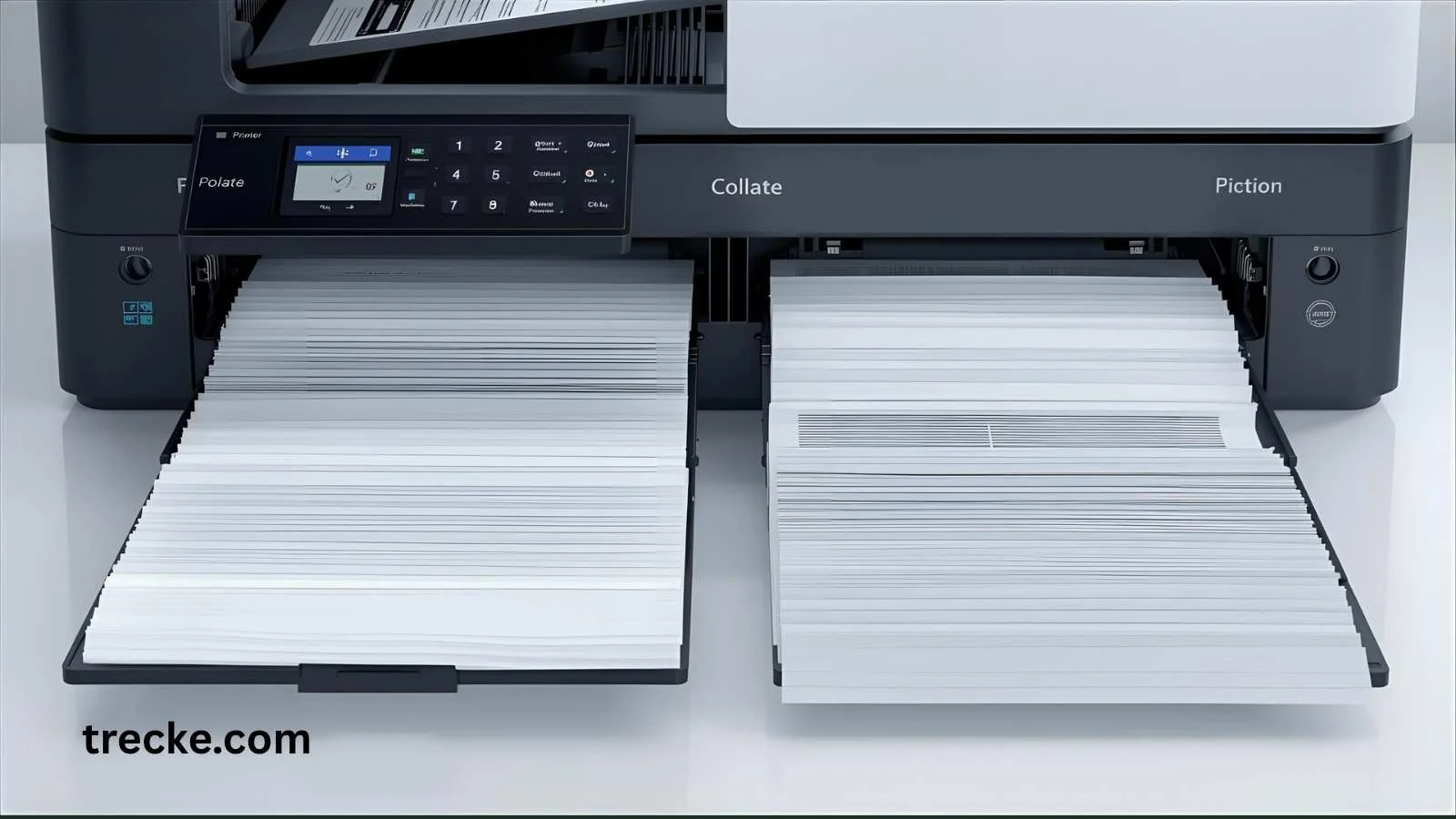If you’ve ever hit “Print” on your computer and noticed the Collate option, you might have paused and wondered, “What does collate actually do?” 🤔
Collate is a simple but essential printing feature that organizes your pages in the correct order, especially when printing multiple copies of a document. Understanding collate not only saves time but also ensures your reports, presentations, assignments, or brochures come out neat, complete, and ready to distribute.
💬 Quick Reply:
In printing, collate means arranging pages in the correct sequence so that each copy of your document comes out complete and in order.
If you’re printing for school, work, or personal projects, knowing how to use collate correctly can make your printing experience smooth and stress-free.
🔍 What Collate Means in Printing
Primary Meaning:
Collate in printing refers to the process of arranging multiple pages in the correct order when producing more than one copy of a document.
Example:
Printing 3 copies of a 5-page document with collate enabled will produce:
Copy 1: 1, 2, 3, 4, 5
Copy 2: 1, 2, 3, 4, 5
Copy 3: 1, 2, 3, 4, 5
Without collate, the pages print in separate sets:
1, 1, 1, 2, 2, 2, 3, 3, 3, etc.
Key Insight:
Collating ensures that each copy of your document is complete and sequential, which is crucial for multi-page reports, presentations, or manuals.
📜 Background & Origin
The word collate comes from the Latin collatus, meaning “brought together” or “assembled.”
- In traditional printing, collating was done manually to arrange pages before binding.
- Today, digital printers and software handle collating automatically, making multi-copy printing effortless.
Why it matters:
- Saves time sorting pages manually
- Reduces errors in multi-page documents
- Makes stapling, binding, or distributing easier
💬 How Collate is Used
1. Home & Office Printing
Collate is useful for:
- School assignments 📚
- Work reports 📊
- Manuals or presentations 📝
Example: Printing 10 copies of a 12-page report with collate ensures each copy comes out complete: 1–12, 1–12…
2. Professional Printing Services
- Collate is essential for brochures, flyers, and booklets to maintain proper page order.
- Helps with stapling, binding, or assembling multiple copies efficiently.
3. Digital Document Printing
- Word processors, PDFs, and printer drivers often have a “Collate” checkbox.
- Ensures sequential output automatically, avoiding time-consuming manual sorting.
⚙️ Technical Notes on Collate
- Printer Settings: Most modern printers allow collated or uncollated printing via the Print Settings or Preferences menu.
- Large Print Jobs: Collate is especially useful when printing hundreds of pages or multiple copies to reduce errors and manual labor.
- Stapling & Binding: Collated prints are easier to staple, bind, or organize, especially for professional documents.
Tip: Some printers may slow down slightly when collating very large jobs, but it’s usually worth it to save time in manual sorting.
🚫 Common Misconceptions
| Myth | Reality |
|---|---|
| Collate changes page content | ❌ It only affects page order, not the content |
| Collate is always necessary | ❌ Only useful when printing multi-page documents with multiple copies |
| Collate and double-sided printing are the same | ❌ Double-sided printing is about paper usage, collate is about page order |
| Collate is complicated | ❌ Simply check/uncheck the box in print settings |
| Collate works automatically in all software | ❌ Not all programs enable collate by default; always check your settings |
🔁 Similar Terms & Alternatives
| Term | Meaning | When to Use |
|---|---|---|
| Uncollated | Pages printed separately by number | Printing single pages in bulk |
| Sort | Arrange printed pages in order | Alternative in printer settings |
| Batch Printing | Printing multiple documents in sequence | Office or large-scale printing |
| Duplex Printing | Printing on both sides of paper | Related to paper usage, not order |
| Stack / Tray Output | How printed pages are delivered | Printer hardware related |
Pro Tip: Use collate when producing multiple complete copies; alternatives are for specialized needs.
💌 How to Use Collate
- Enable Collate: Check the “Collate” box in your printer settings.
- Choose Number of Copies: Enter how many copies you want.
- Select Duplex if Needed: Decide on single- or double-sided printing.
- Print: Each copy comes out fully assembled, saving time and effort.
Visual Suggestion: Include a screenshot of a typical printer dialog highlighting the “Collate” checkbox.
🆚 Differences From Similar Printing Terms
| Term | Meaning | Usage | Tone |
|---|---|---|---|
| Collate | Arrange pages in correct sequence | Multi-page, multi-copy printing | Informative / Technical |
| Uncollated | Print pages separately by number | Multi-copy printing | Neutral |
| Sort | Order printed pages manually or automatically | Office / Digital printing | Informative |
| Duplex | Print on both sides | Printing hardware / Eco-friendly | Technical |
| Batch Printing | Print multiple documents sequentially | Office / Professional | Technical |
💕 Why Collate Matters
Collate is essential for:
- Home, school, and office printing
- Multi-page reports and presentations
- Manuals, booklets, or any document needing multiple copies
Understanding collate saves time, effort, and frustration. It ensures professional, organized output for presentations, meetings, or personal projects.
🧭 Conclusion
Collate in printing is a simple yet powerful tool that ensures multi-page documents are produced in the correct order, especially when printing multiple copies. ✅
Whether printing at home, in an office, or through a professional service, enabling collate:
- Saves time sorting pages manually
- Reduces errors in multi-page documents
- Makes stapling, binding, and distributing easier
Next time you print, remember to check the collate option—it’s a small step that makes a big difference! 🖨️











